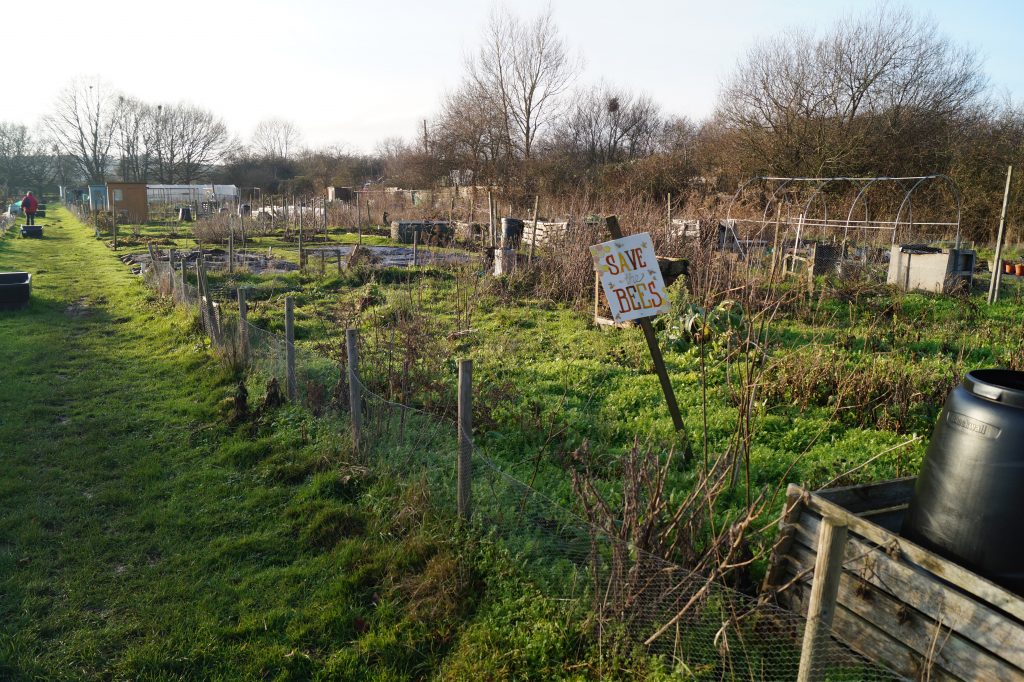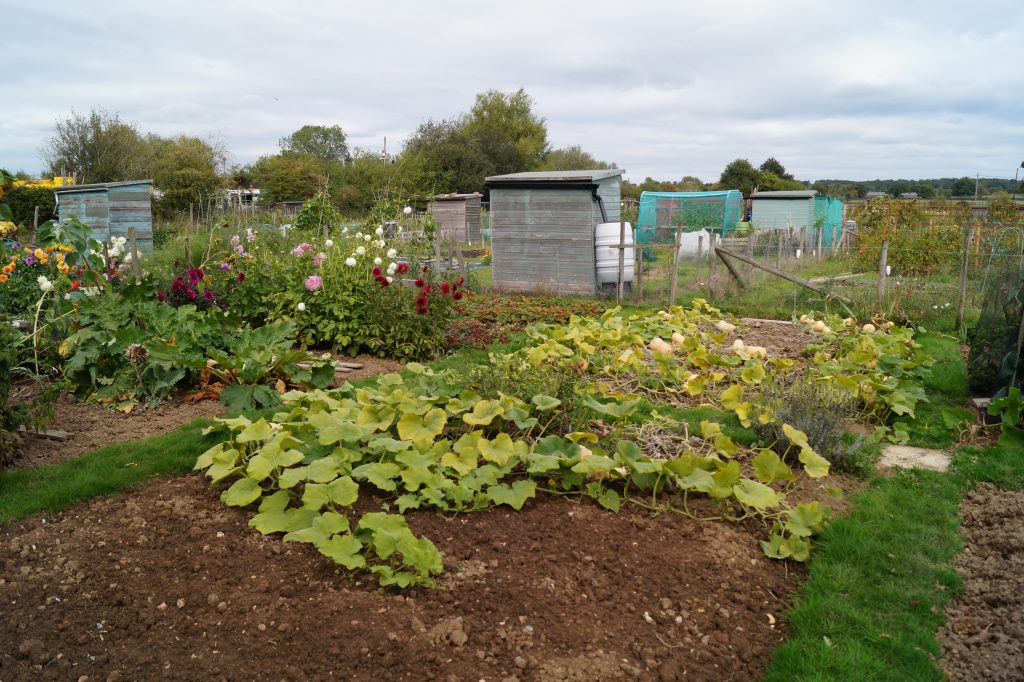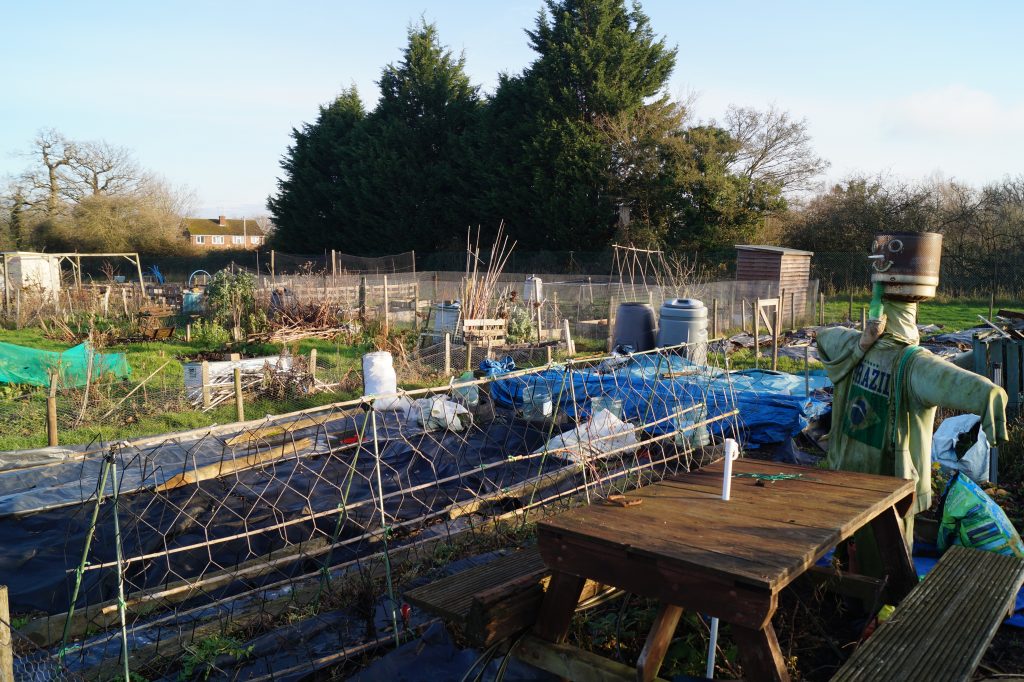The Swallowfield Allotments site has matured over the ten years it has existed and now comprises 28 individual plots, tended by green fingered amateurs and experts alike from the villages of Swallowfield Parish and beyond. Please read on to discover how the site has evolved over the years.
In 2010, following on from many requests from local people, and under the auspices of Swallowfield Parish Council, a group of like-minded enthusiasts got together to find a suitable plot of land for the establishment of parish allotments. Much hard work and many challenges were overcome to find a suitable site; issues such as site access and lie of the land, water supply, soil types and existing vegetation all had to be considered. Two sites were initially rejected; the first following local residents’ objections and the second one being considered unsuitable. Calico Field on Part Lane was the third one considered as a potential allotment site; offered by a local charity, it had been used for grazing horses and had existing stable buildings which were subsequently saved and incorporated into communal allotment sheds. This site had distinct advantages: there was less vegetation to clear, fewer overhanging trees, better access from the road and it already had a water supply.
In order to proceed, the Parish Council leased the site from Calico and subsequently rented it to the Allotment Association. It was then that SPAA had to be formalized by producing a Constitution and Rules, opening a bank account and establishing a committee with officers in the roles of Chair, (Cynthia Goodyear), Secretary, (Pam Wright) and Treasurer, (Terry Trinder). Other original founding members were Terry Edmond, Reginald Granados and Neil Marshall who made up the other members of the committee.
In January 2011, work started on clearing the site of unwanted vegetation, removing the internal fences and posts, removing debris and rubbish accumulated over time and, thanks to local businesses, preparing the ground for ploughing.
At the same time, Planning Permission from WBC was sought and obtained but one of the planning conditions required the entrance to be moved back some 15 feet from the road and to remove some of the old hedgerow which obstructed the site lines when exiting. One of the conditions imposed by the Parish Council in the rental agreement was also the creation of a new entrance and car park but raising the necessary funding was a huge challenge. The cost of this was certainly daunting but a donation from Swallowfield Horticultural Society and the Parish Council enabled the committee to commission WBC’s contractors to build a proper kerbed entrance for the site.
In order to fund further improvements, an application for a Lottery Grant was submitted in April 2011.
The process was successful and the sum of £8500 was used to create the car park, erect the fencing around the field, plant up the new hedgerow along the front fence and install water troughs which were located along the central path. Until then the only water supply was a single trough by the front gate.
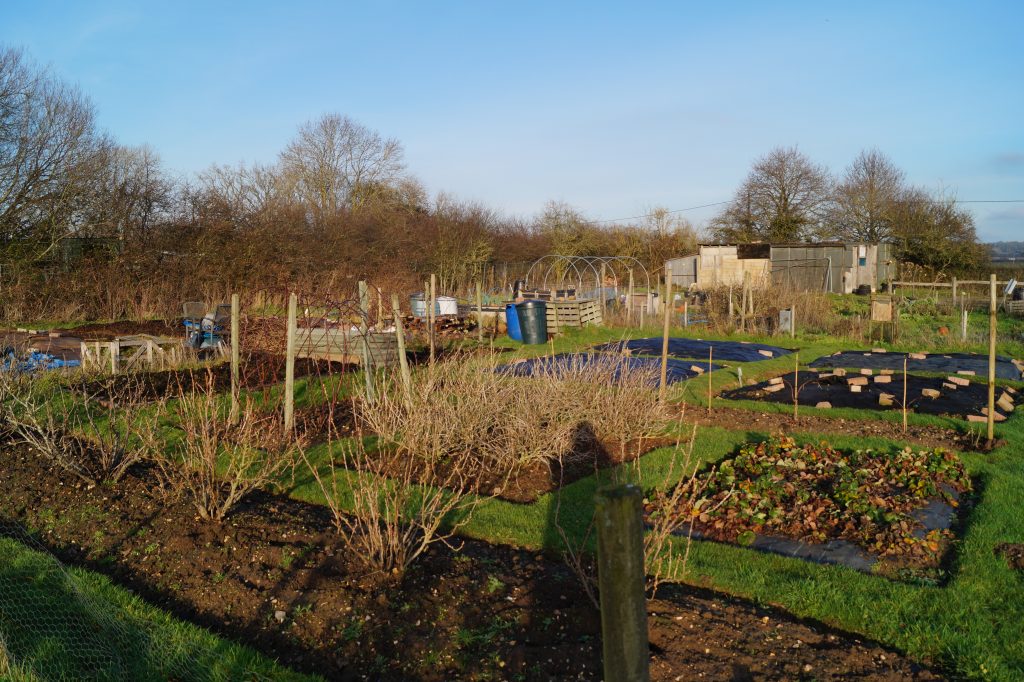
The balance of the Lottery money was used to buy small items of equipment and to install security lighting around the sheds (since stolen!)
Against all the odds, the allotment site was up and running, in no small way thanks to the hard work of the SPAA committee and members, and the support of the Calico Trust and Marina Goldsmith, John Anderson and all the Councillors at Swallowfield Parish Council, John Cowdrey of Deepwater, PP Plant, Andy Pope, Oliver Ward at Heartwood Trees and many more outstanding contributors.
Swallowfield Parish Allotments Association has not stood still since its creation in 2011. Many improvements and developments have been ongoing, thanks to the hard work of successive committee members and plot holders, and as a result of several fundraising initiatives.
In November 2016, two wooden hoppers were built to contain deliveries of manure and wood chippings.
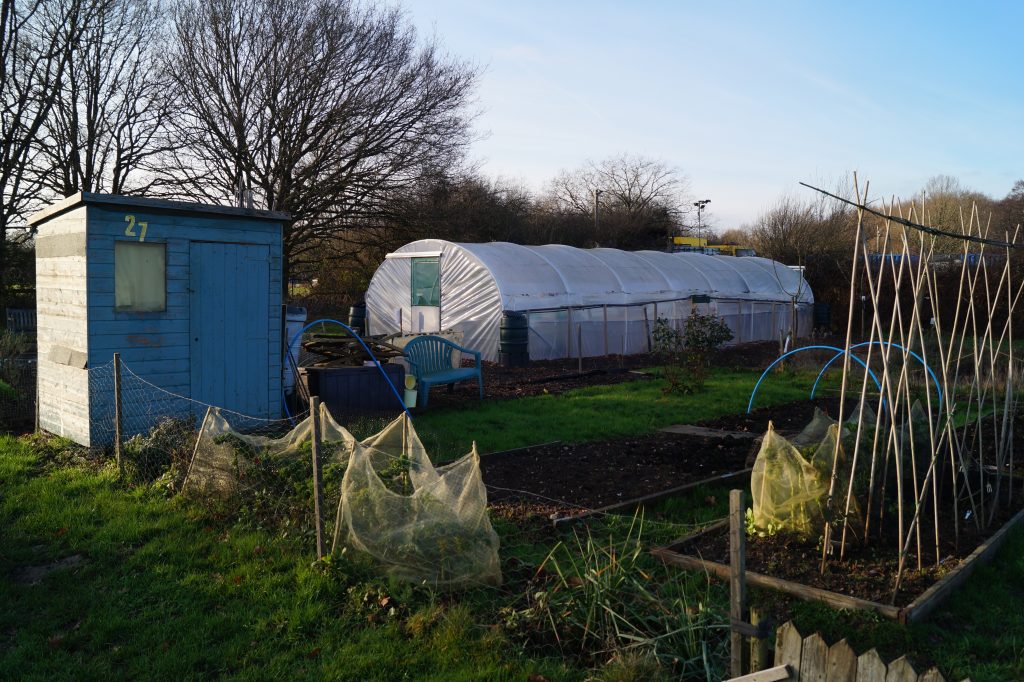
In 2016, plans were made to purchase a polytunnel and fundraising was undertaken to raise the necessary money. This was installed by members over several weekends and the polytunnel was finally opened in April 2017 at a cost of £1,544. Internal staging and water butts were also purchased in 2018 and a clever system of guttering installed to capture rainwater. The polytunnel was marked out so each plot holder has a space inside for their own use.
Concerns about run- off and flooding brought about the creation of a pond which was dug out in July 2017. This acts as a drainage system for the western end of Calico Field and, in particular the polytunnel, and has proved to be an effective way of creating a habitat for wildlife. Over the years, the pond has been planted with flag iris, waterlilies and bulrushes. Although usually dry in hot summers, the winter sees the pond full of water. A second plot (Plot 12) was given over to nature.
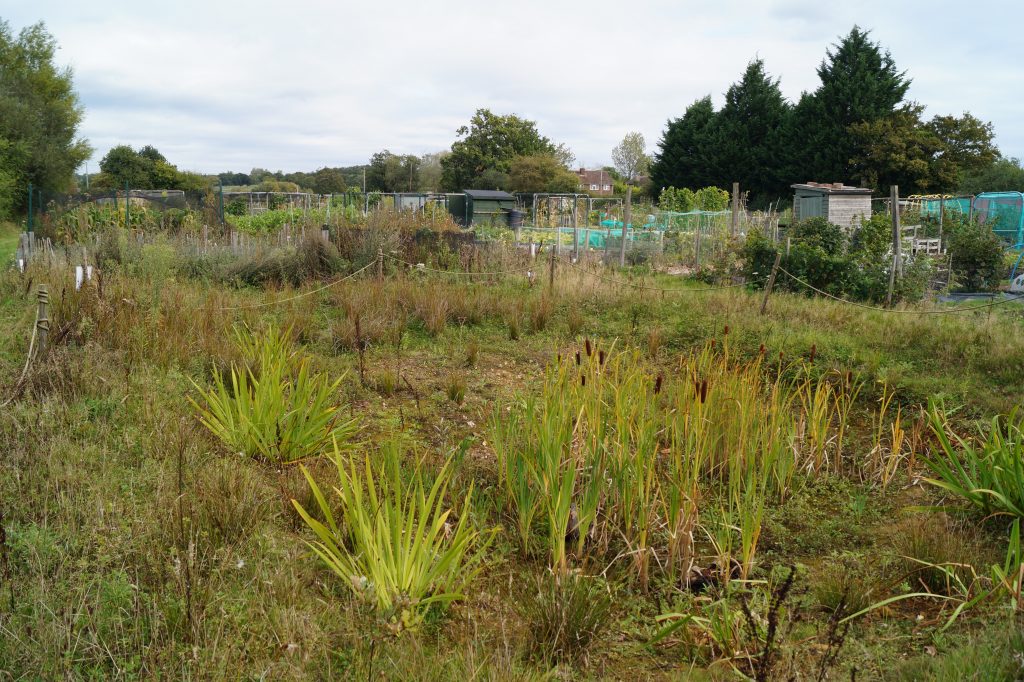
Each plot holder takes a turn to do some mowing on the side paths round their plot but mowing the wider verges was a massive challenge and in the same year, after much deliberation, it was decided to pay a contractor to do this task.
In January 2018, the original lease for Calico Field was updated for a further 24 years and 11 months which has secured a more long-term future for the Allotments Association and for the benefit of Swallowfield Parish residents.
SPAA has continued to host annual Open Mornings, raising funds through raffles, children’s events and plant sales. Social events such as at Hallowe’en, have proved quite successful; income generated from such events continues to fund the servicing of the communal equipment which is available for plot holders to use, following onsite training by committee members. The purchase of a generator has enabled plot holders to bring their own electrical equipment on site to use.
Various committees have explored the possibility of establishing a compost toilet and facilities for the less able but, to date, these have proved too expensive to initiate. In March 2020, the Covid 19 pandemic meant a tightening of hygiene rules on site but the allotments provide a safe and healthy way to exercise and to maintain physical and mental well-being for many individuals and families.
